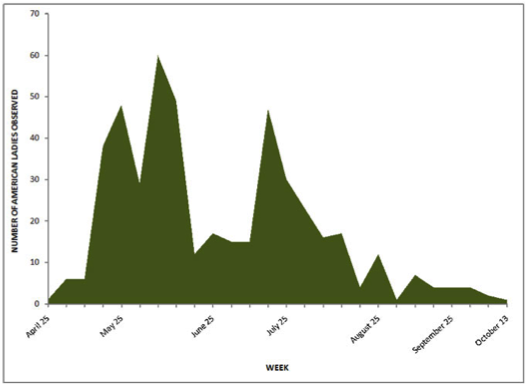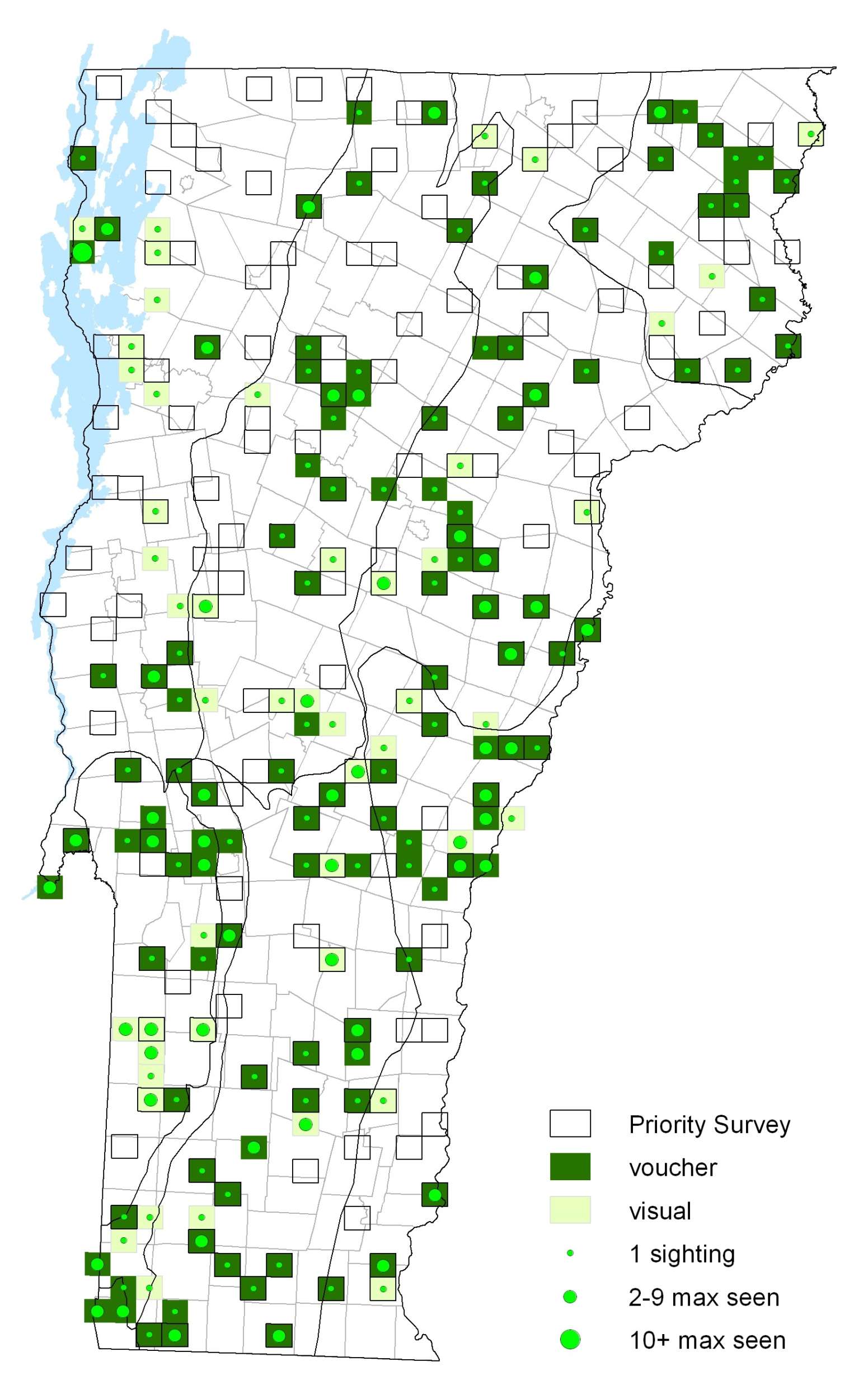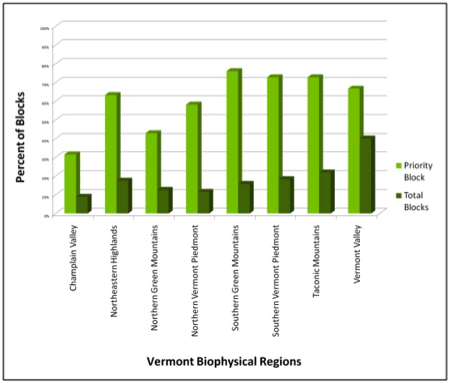|
Resident Conservation Status North American Range |
Some lepidopterists have noted that the American Lady does not clean its antennae with its legs, as do many other species. Males are territorial. They perch on hilltops or vegetation in the afternoon waiting for females. Mating occurs during the afternoon and evening. Females lay eggs singly on the top of hostplant leaves. Caterpillars are solitary living and feeding in a nest of leaves tied with silk. Some adults overwinter and emerge in early spring, while others overwinter as pupae emerging in late spring.
Identification
Upperside with uneven brown, yellow and orange pattern. Forewing with a black apical patch, a small white spot in the orange field below the patch, and a white bar at the leading edge fo the forewing. Underside of hindwing with two large eyespots. Winter form is smaller and paler, summer form larger with brighter coloration.
Flight
There were two overlapping generations in Vermont during VBS with 2003, 2004 and 2007 having large flights compared to other years. Extreme dates: 25 April 2007 in Bristol (B. Collins), and 13 October 2004 in Grand Isle (D. Hoag).
Distribution and Habitat
The American Lady was found throughout Vermont except less common in the Champlain Valley. Caterpillars reported to feed on Sweet Everlasting (Gnaphalium obtusifolium) and Pussytoes (Antennaria) during VBS, also known to feed many others. Adults nectar a wide variety of plants, with 21 species reported during the survey.







